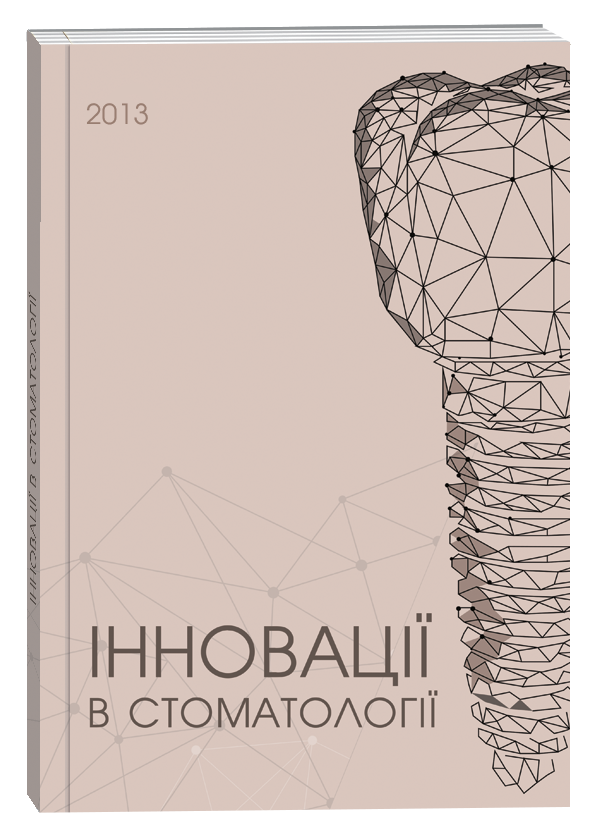CARIES INTENSITY, THE SYMPTOMS OF BLEEDING, AND DENTAL CALCULUS IN CHILDREN 12, 15 YEARS OLD CITY OF SEVASTOPOL IN DINIMIKE 25 YEAR FOLLOW-UP
Keywords:
epidemiology, intensity, caries, indexes of an assessment of staxis and odontolith, second teethAbstract
Epidemiological studies that are conducted in the region of interest of Ukraine in the first place as the monitoring of dental disease in the whole country. Secondly as the city where the 80 years of the last century, the state program has been implemented fluoridation of drinking water, and in the 90 years since the collapse of the Soviet Union and the withdrawal of funding, the program was phased out in the 2000s - 2010s as trace the effect of this program for 25 years of observations. The purpose of research: Therefore the aim of the study was to investigate the intensity of dental caries symptoms of bleeding, and dental calculus in children 12, 15 years of Sevastopol 25- year observation period. Materials and methods: Epidemiological studies conducted exploratory method recommended by the WHO (WHO, 1987). In the city of Sevastopol in 1988, 1992, 2003, 2013, 480 children were examined 12, 15 years, 60 people in each age group. The surveys were carried out in a medical office a secondary school in Sevastopol. Results of the research: The intensity of dental caries in 12 -year-olds (Table 1) in the indices KPUz and KPUp (2,51 and 2,61 , respectively) was low for the graduation of WHO in 1988 (the period of fluoridation of drinking water), decreasing after the termination of fluoridation of drinking water in 1992 to 2,52 . The figures continued to decline in the 2000s (2,13 and 2,20, respectively) as the trace effect fluoridation of drinking water (about 20 years). And in 2013, the intensity of the caries process has increased almost 2-fold compared to 10 years ago (from 2,13 and 2,20 to 3,67 and 4,17, respectively). In 15 – year-olds intensity of dental caries index KPUz and KPUp to date continues to be low, falling in 1988 to 4,07 and 4,45 to 3,6 and 3,6 respectively in 2003. In 2013, these rates have almost reached the 1988 data (3,78 and 4,36 , respectively). Conclusions: Epidemiological studies of children 12, 15 years in the dynamics of the city of Sevastopol for 25 years showed a decrease in the intensity of dental caries in 12 year olds from 2,51 in 1988 to 2,13 in 2003. And over the past decade, the growth of the intensity of almost 2-fold. In 15 – year-olds downward trend remains similar to 2003 (from 4,07 in 1988, growth in the intensity of dental caries , which reaches almost the original data (in 2013 - 3,78). Quality level of dental health in children 12, 15 years old was higher than in 1988, where "K" to "P" is 1:1,8 at 12 years of age, and 1:2 at 15 years of age. In 2013, these figures are significantly lower in the 12 – year-olds – 1:1,04, or directly opposite at the 15 – year-olds – 1,5:1. The intensity of the symptoms of bleeding in 25 year period in children 12 years of age increased from 0,1 in 1988 to 0,77 in 2013, changing the assessment of low to moderate stable. Similarly, in 15 – year-olds: from 0,06 in 1988 to 0,81 in 2013. The intensity of tartar in 12 – year-olds decreased during the observation period, from 0,33 in 1988 to 0,11 in 2013, not going beyond graduation "low". The intensity of tartar in a 15- year-old children for a long time (15 years) was at baseline (0,48 – 1988, 0,50 – 2003), then in the last decade has decreased by 2,5 times (up to 0,20 in 2013).
References
Косенко К. Н. Эпидемиология основных стоматологических заболеваний у населения Украины и пути их профилактики: дис. … д-ра мед. наук : спец. 14.00.21 / Косенко Константин Николаевич. – Одесса, 1994. – 350 с.
Рыбаков А. И. Эпидемиология стоматологических заболеваний и пути их профилактики / А. И. Рыбаков, Г. В. Базиян. – М.: Медицина, 1973. – С. 32–40, 44 – 49, 53 – 72, 182 – 211.
Бюллетень ВОЗ «Стоматологическое обследование, основные методы». 3-е изд. – Женева, 1989. — 21с.
World Health Organization: oral health surveys basic method. 4th edition, Geneva, WHO 1987; – Р. 760 – 871.
Леус П. А. Коммунальная стоматология / П. А. Леус. – Брест, 2000. – 284 с.
Иванов В. С. Карта стоматологического обследования ребенка для эпидемиологических исследований / В. С. Иванов, О. В. Деньга, Л. А. Хоменко // Вісник стоматології. – 2002. – №4. – С. 53 – 66.
Анализ и планирование деятельности стоматологической службы / В. К. Леонтьев, В. Д. Вагнер, В. И. Полуев [и др.] // Экономика и менеджмент. – 2000. – №1. – С. 9 – 14.
Bratthall D. Introducing the Significant Caries Index together with a proposal for a new global oral health goal for 12-year-olds / D. Bratthall // Int. Dent. J. – 2000. – № 50 (6). – Р. 378 – 384.






